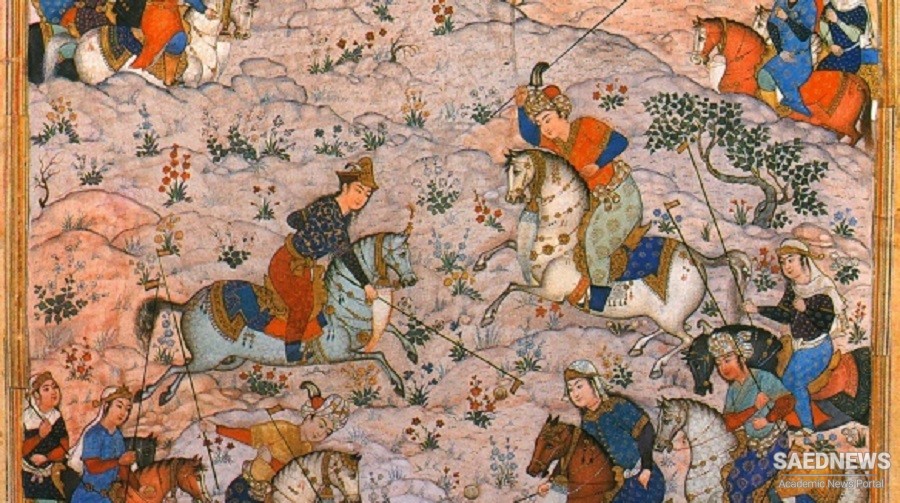There is a problem here, however: the concept of “literature” has no equivalent in the terminology used by traditional Persian scholars. The word adabiyyât, which denotes “literature” in modern Persian usage, is a neologism coined by Turkish modernists in the 19th century and subsequently adopted by other languages of the world of Islam. Traditionally, the notion of embellished speech was essentially linked to poetry, for which a proper appellation was currently used, and even when it could be applied to prose works, it was because the style of these texts had certain poetic qualities, for instance by the insertion of rhythmic and rhyming phrases (saj’) or of short poems. The Golestân (Rose garden) by Sa’di (d. 1292) is the most celebrated example of the poeticizing of the classical Persian prose style, which set a standard for the centuries that followed. The same emphasis on poetry is also noticeable in Persian literary scholarship.
The system so tenaciously adhered to until quite recently was not a creatio ex nihilo. The first Persian writers and poets were very conscious that they continued the Arabic literary tradition, which by the end of the 9 th century had already reached its mature growth, including sophisticated philological methods and authoritative works of literary criticism.2 However, even if full credit is given to this Arabic legacy, it is still an astonishing fact that those elements in the Persian tradition that eventually became its most distinctive features were already present at a very early date. The fundamental system of literary conventions seems to have been established quite soon and to have acquired a firm grip on the actual writing of Persian poetry. It appears, for instance, that the prosodic rules followed by the first Persian poets were not very different from those employed by later generations. The convention of writing “responses” (javâbs) or “similitudes” (nazires), i.e., compositions emulating successful works by preceding authors, helped to provide the tradition with strong coherence and gave classical Persian literature its conservative outlook in which very little seems to have changed for more than a millennium.
If the classical tradition had been really so rigid and impervious to change as it appears from the robustness of its basic set of prosodic rules, the writing of its history would not be a very challenging project. However, when one takes a closer look at the actual production of literary works, their rich variety of forms and content soon becomes apparent. The question to be asked is not, therefore, whether or not significant variations can be found within the tradition, but how patterns of development can be discerned enabling the historian of literature to trace the general lines in the story of a tradition’s life. Several suggestions have been made for the periodization of Persian literature. Some were based on external factors such as the dynastic history of Persia—considering the undeniable fact that Persian literature has had close links with the courts during most of its history—or an underlying social and economic development to which changes on the level of literature were supposedly reducible.


 Classic Persian Literature as a Tradition
Classic Persian Literature as a Tradition














































